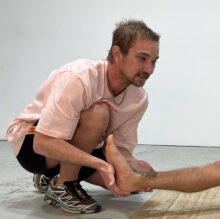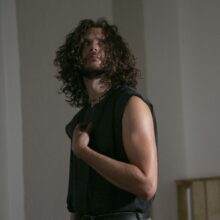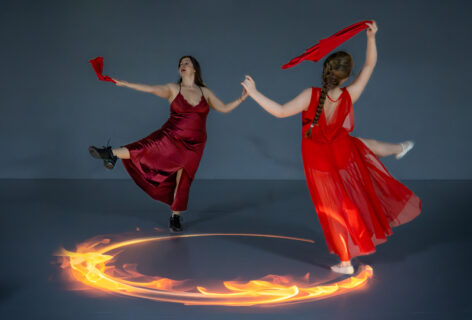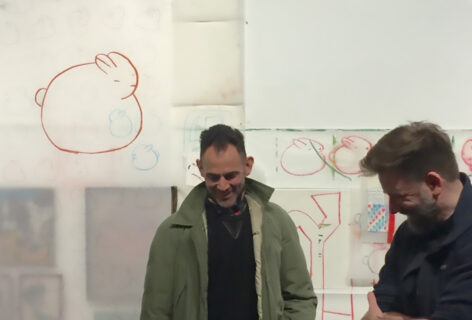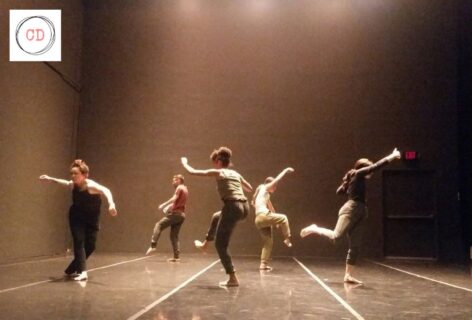We invited two strangers with overlapping interests to meet on the internet and see where things go. Nic Chilvers is an artist and academic based in Melbourne, Australia and Brendan Drake is an interdisciplinary dance artist based in Brooklyn, New York. Both artists research the embodied psychological consequences of living in a “post-AIDS” generation, the possibility of queer scores, pleasure and horror, community and homophobia, and more.
It was really exciting to match these two artists and witness their interests unfold around one another—to see when and how they call upon courage to confront themselves in performance, in the classroom or studio, and, here, in conversation.
—Londs Reuter, CC Co-editor
This article has been edited for the purpose of publication.
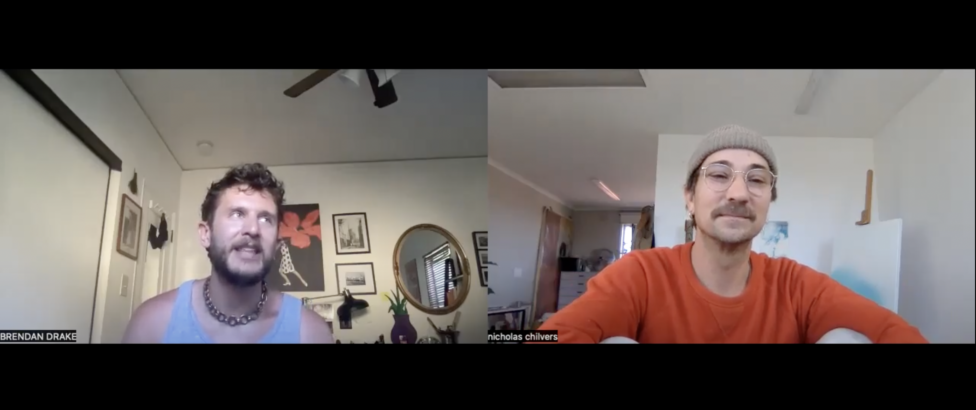
Screenshot courtesy of Londs Reuter
Nic Chilvers
I’m gonna start with an explanation of why I’m doing research, moving from fine art into more embodiment practices.
When you’re young, you’re queer, you have little guidance, you can get a bit lost. I had a relationship, the person was very traumatized, quite destructive in the way he lived. There was a bit of risk behavior myself. I was attracted to his character. During the course of the relationship, there was, for me, an HIV positive diagnosis. It was in about 2006.
Around that time, in Australia (I don’t know what it was like in the States), they used to withhold treatment until you were very sick. They claimed that they weren’t sure what long term effects the treatments had. It wasn’t until I had cancer and a number of other serious pulmonary issues… I sort of had a massive breakdown. I went into full risk behavior for about five years. Drugs, alcohol, chemical addiction. Until there was almost nothing left.
I went into rehab, which is more like going into hospital here. Slowly started to recover. I would really say the state that I was in was less than zero. The best thing about it is that I made it through. Everything after that point has been all about recovery.
In recovery, you have the opportunity to build new things, new ways of being happy and comfortable that you’ve never even experienced before.
One thing I learned along the way, when I was really suffering from PhD—(laughs) I’ve done it again—PTSD, was that I needed something really hardcore to connect to, to drag me out of where I was. I wanted to research how art can connect people… as a way of understanding what happened to us collectively. Because I know that I only have one version of a story of a wave of something that killed 40 million people and really affected the lives of many other people, directly and indirectly.
By moving through and embodying where I was at, what I’d been through, understanding what it is to be completely vulnerable, and then find new strength… it became a practice, a life practice, a movement practice, a dance practice, a happiness practice.
Brendan Drake
Do you find that the movement practice is coming from a place of instinct? Is it: “I’m in a space alone, I’m gonna see what this is?” Or was it like, in the way that you got a PhD? To focus your energy?
NC
It was instinct, it was pushing towards something new and scary. It was also strategy.
In reality, I was having a moment of vulnerability, which was affecting the way I was using my body, my voice, everything. I could relax my jaw, then my jaw tightens in me and gives me a headache. It’s really hard to shift the current, isn’t it?
I began using attentional scores that helped me stop the process of getting very anxious. The first attentional score was “relax your jaw” and then “relax your breathing.” Then, I began empathizing with the student I think might have ADHD. It’s a bit hard for him to stay contained and quiet in the class. Sure. Instead of yelling at him, I asked: Hey, do you really want to be here? And he goes: I do, actually. I said: Cool.
I had to really confront me—what I’m gonna call automatic behaviors or characteristic movement signatures, where your body goes into a kind of panic. A trauma response.
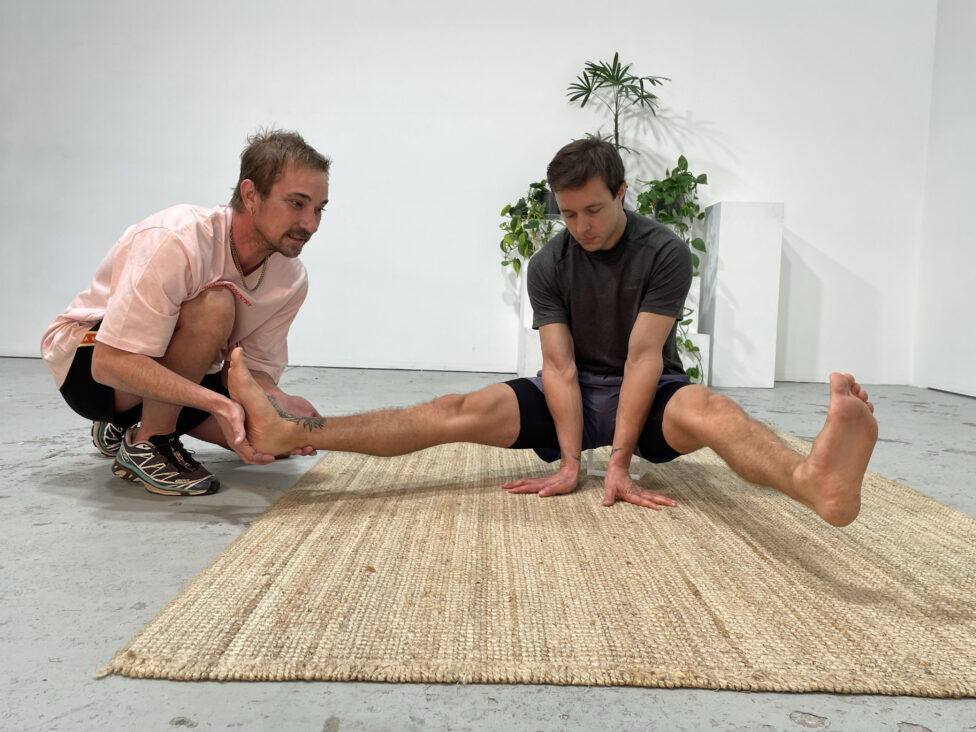
“Elevating Joey—pelvic movement signature #3” (2023). Photo courtesy of the artist.
BD
I have so much to say about that in terms of teaching. We have the task of both being young enough, where we can relate to a college student to a certain extent. More so than, potentially, a baby boomer in their 70s.
But I’ve had that situation where students are being confronted with something they don’t like. Usually because the work is unsettling. Like, it’s a very unsettling piece of art, right?
Their reaction might be: “I don’t like that… That was violent… I feel unsafe.” As the instructor, I think: “Oh, my god, I’ve caused harm.” I have to sit with that for a second and realize: No, I haven’t necessarily caused harm here.
We need to sit with this and talk about why you feel unsettled. Why do you feel upset? Or why does this feels like a violent piece of art? Have the conversation. The answer is not to sweep it under the rug. The answer is not to tell the student: “you’re soft, you need to digest this.” But invite the conversation: why is my body having this response to this thing?
In social spaces, like a bar or a club, particularly a queer club, where there’s hundreds of people in a space, all with various degrees of dealing with trauma and abuse and societal homophobia, and then everyone is getting liquored up and maybe on drugs… These are also moments of anxiety you have to deal with. The answer is not necessarily to separate yourself completely. Because where do you go? I usually step outside or I take a lap around the bar or I go into the bathroom, sit in a stall, look at my phone, and ground myself. Then I go back to this space that is supposed to be a safe space. It is a safe space. But it’s also a space that causes quite a bit of anxiety.
NC
Yes, you can create a space where anxiety can happen, but it is a safe space to experience anxiety.
Queer people learn ways to innovate care that are not part of polite society. I love that, in my post-trauma times, I have a new opportunity to extend that care. To share experiences more honestly. In teaching at an art school, I’m helping young artists express themselves, especially when they’ve felt a little shut down in their lives up to that point. It’s like: Well, this is your studio now! This is a safe space for you to even be a little unsafe.
It’s not always about other queer people, because everybody has trauma. I really like the idea of extending our notion of queer care to everybody.
BD
Like if more straight people were reading Jack Halberstam, they’d probably be a lot happier.
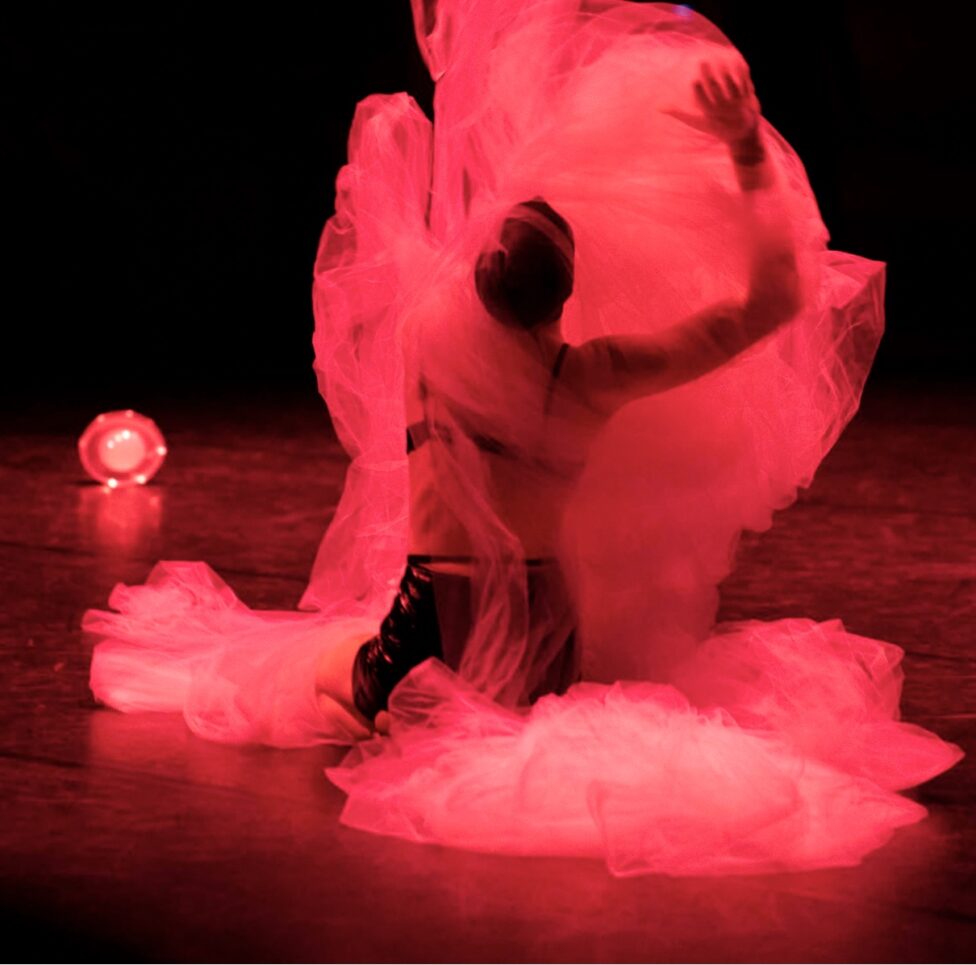
Photo by Letxia Cordova
NC
Do you think that your dance and your choreography is cathartic? Or is it a way of working out problems and processing things? Or a bit of both?
BD
When I make dances, I’m working through a problem I make. Choreography, to me, is the art of fucking around finding out. I’m trying to build a world on stage to figure out the kind of world that I want to live in.
That’s not to say that the worlds that I’m building through my pieces are the worlds I literally want to live in. I work with a lot of horror genre. I play a lot with logic, with dream logic. I’m getting rid of the idea of linear. To do that, you need to think through incoherence. That’s the problem-solving part.
Then there’s the catharsis—which is a word that gets thrown around a lot in dance, but it’s true: there are things that can’t be explained through words. Movement (and incoherence) becomes a way through.
I use a lot of text when I’m improvising. I talk to myself a lot in rehearsal. I’m often having a conversation like, “Well, what do you think about—?” “Oh, I don’t know about that.” Or I’m gossiping with myself. That becomes a part of the process as well.There’s quite a bit of singing, there’s a lot of bodily noises, there’s napping, there’s jerking off.all of these things go into the process.
My favorite dance artists are the ones who work with play as experimentation. It’s not about going into the studio knowing exactly what you’re going to do. It’s about having goals. It’s about having things you’re interested in and letting those goals and interests work together in the space. Fuck around and see what happens.
NC
It sounds like there’s two things: There’s the conversation going on, from your brain directly to your body, where you’re actually telling yourself things and asking yourself questions. I caught myself doing it the other day: I was like trying to do a movement. I’m like: If I do like that, it’s gonna work much better, it’s gonna look better. Then I said out loud, “Good point.”
I was having a conversation with my own body. It sounds a little cliched, but it’s actually a very hard thing to authentically do, to really take note of the body-mind correspondence.
Do you listen more to your body? Or do you listen more to your thoughts? Or do you try to let them sync up?
BD
I don’t even know if they sync up. I think they’re together. I mean, this is why I went to graduate school. I needed to have dedicated time working through shit to figure out why I feel the way I feel about the things I feel strongly about.
I don’t know if coherence between thoughts and movement is ever the goal. I think at one point for me it used to be. I was very clear on my work being about XYZ. When you watch my work from a few years ago you’re gonna know exactly my opinion on the themes I’m exploring choreographically. Now I feel like I’m trying to articulate my confusion through my work.
Right now, I’m super interested in making visible queer eroticism, and queer sociality on stage. I don’t think there is a single member of the LGBTQIA community that doesn’t have conflicting thoughts about those ideas, right? Because queer spaces can be incredibly toxic. But they can also be incredibly beautiful. They are some of the most freeing spaces I’ve ever been.. They’ve also been the location for some serious pain and trauma. But I’m not going to give them up.
My Graduate advisor David Roussève refers to gay bars as “maimed but beautiful.” When he said that at the beginning of my thesis process, I thought: “Oh, my God, I’m gonna be riding that term for the next 10 years, because it so perfectly describes the gay bar experience. I love not having a codified opinion on it. That forces me to be able to change.

Photo by Letxia Cordova
NC
The focus is the unclarity, the messiness of experiencing all of the exciting dynamic things that come out of those two forces. You’ve got beauty, you’ve got the maimed. I don’t think we have proper beauty without a certain edge of damage. Beauty comes from resilience. It can’t be something completely on its own.
BD
Where I’ve seen it done really well is through poetry. I think the reason is that poetry does not necessarily function as a linear narrative. Dance, if it’s not a three act ballet, very rarely functions as a linear representational world. When it does it’s—it’s often embarrassing!
I think the world-building that comes with choreography is such a powerful platform for articulating the queer experience, because it functions in a place of incoherence. Queerness is an incoherent thing. It’s a hard concept to explain because queers are not a monolith and we are constantly changing.
NC
I’ve got a mate, Anthony, who did this class where you move freely—get it out, do what you do. Then, freeze. You’re asked: “What is this emotive shape that you’ve let in?” But he said every time he froze, his hands were above his head, like he was surrendering in a bank robbery. Every. Single. Time.
So he asks: Why am I constantly doing this gesture so much? Then he’s telling me about how his work is really hard. His father died of cancer. His mom’s a real pain in the neck. His brother has schizophrenia. His relationship is unstable. He’s trying to buy a house. He says, Nic, it helped me realize where I was at. I feel like I’m surrendering all the time. All the time. I surrender. I surrender, I surrender.
It’s amazing because he wasn’t saying, “I’ve got to stop doing that.” Instead it gave him permission. It gave him a way to read his body.
BD
I love that. I mean, it reminds me in one of our previous conversations, I was talking about how often in my work, I am performing a stylized, almost evil version of myself. I’m performing the most daring version of myself, for better or for worse. That person might be insufferable. But that person also has a courage I wish I had. A courage that, as I get older, I have more of it doesn’t matter much more self-actualized I become or how much I put myself out there in my work. in life… I will always be that 12 year old, chubby gay kid who does not want to talk to the other kids. That wants to hang out with the grown ups.
For me, I’m often putting out the worst version of myself onstage, but it’s also an aspirational version of myself, because that person is doing exactly what they want. Without causing harm to other people, I want to strive to be that person who does exactly what they want. Without being worried about who I’m going to offend… without worrying about upsetting mommy and daddy. That’s that’s the kind of performer I want to see.
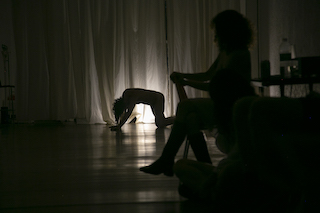
Photo by Whitney Browne



